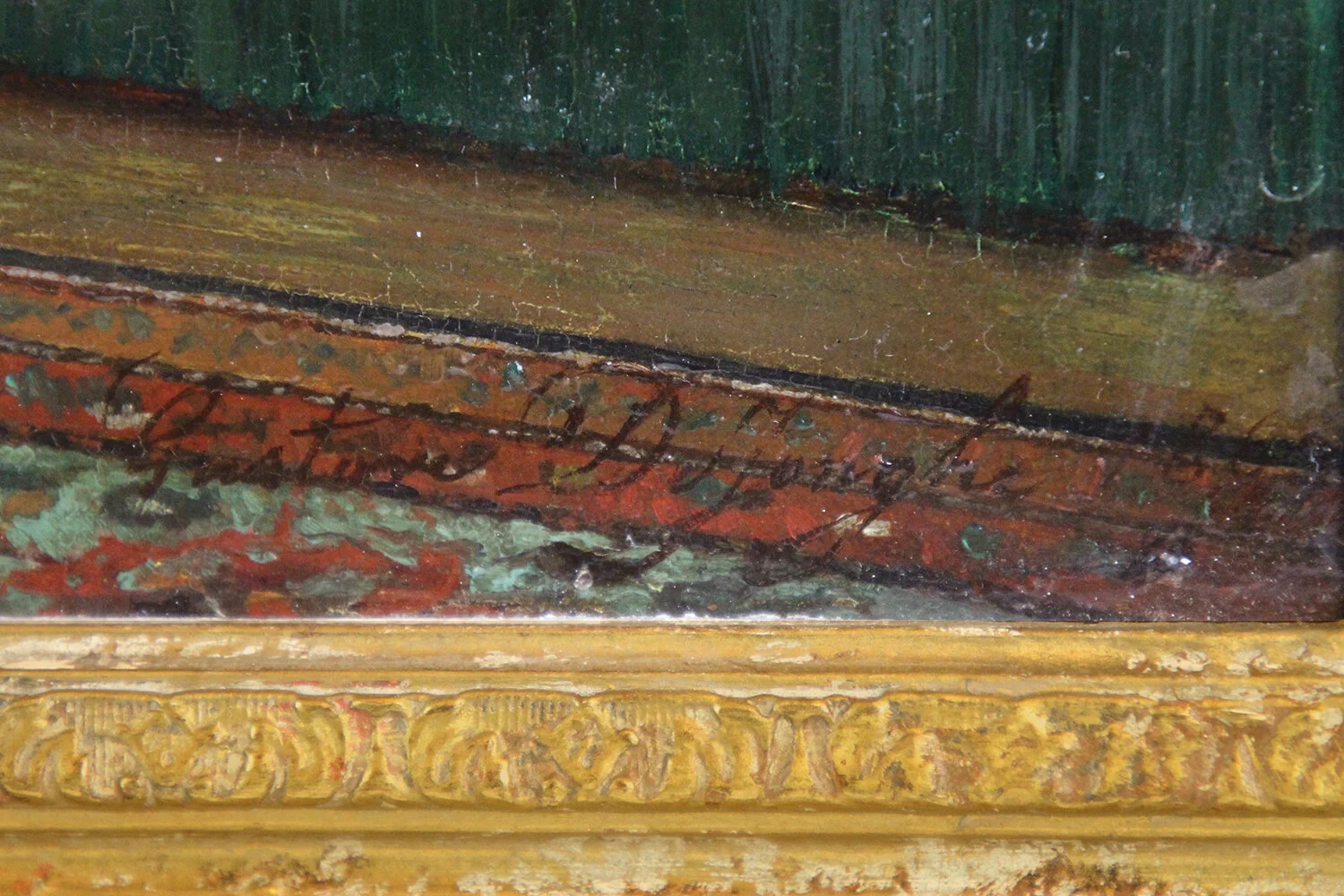Gustave Leonard De Jonghe (Belgian 1829-1893)
Playtime
oil on panel, signed and dated lower right "1883"
Size: 18 x 21 ⅝ in (with frame 23 ¾ x 27 in)
J18777
SOLD
This item is no longer available. Please contact us to inquire about similar pieces.
uno@langmann.com
604 736 8825 or 1 800 730 8825
The celebrated genre painter Gustave Léonard de Jonghe was best known for his lavish interior settings depicting fashionably elegant ladies surrounded by lush interiors. Born in Courtrai, Belgium, de Jonghe was the son of the renowned landscape painter Jan Baptiste de Jonghe (1785-1844). Gustave trained first under his father and upon his death received a bursary from Courtrai to study at the Académie Royale des Beaux-Arts in Brussels in 1844. Here he studied under the neo-classical artist François-Joseph Navez and historical painter Louis Gallait.
Relocating to Paris in 1855, de Jonghe’s work was well received by both art critics and the public. He led a successful career, frequently exhibiting at the Paris Salon and travelling between Paris and Brussels. His early works explored historical and religious themes in the Realist manner. With the move to Paris his subject matter shifted to portraiture, genre scenes and occasionally landscapes in oil and sometimes watercolour. He often depicted mothers with their children in interior settings, aimed to evoke the quiet joys of family life among the prosperous Bourgeoisie middle and upper class. His luxurious interiors and background settings depicted the fashionable details of the Belle Epoque period incorporating contemporary tastes such as the Japonism craze and Orientalist subjects. De Jonghe was often compared to Alfred Stevens and considered his successor after Stevens’ death.
Gustave de Jonghe exhibited regularly both in Brussels from 1848 and at the Paris Salon (1855-1861). He was awarded medals in Amsterdam in 1862 and at the Paris Salon in 1863, and in 1864 received the Order of Leopold from the Belgian King Leopold I. De Jonghe suffered blindness following a stroke in 1882 after which he returned to Belgium, living in Antwerp from 1884 until his death in 1893. His work can be found in The Musée d’Orsay in Paris, The Royal Museum of Fine Arts in Antwerp, and The Hermitage Museum in St. Petersburg, as well as in private collections worldwide.



